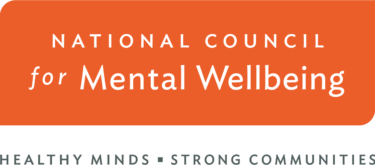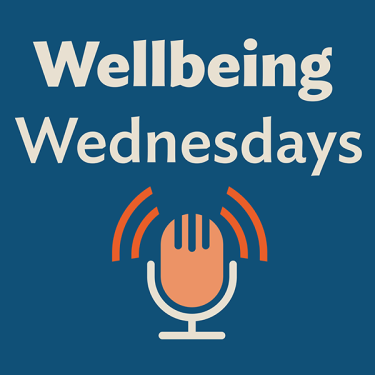Recent surveys suggest that the country is getting more comfortable talking openly about suicide. A 2024 Public Perception of Mental Health and Suicide Prevention Poll showed that nine out of 10 people in the U.S. believe that suicide can be prevented at least sometimes, showing an incredible shift in public understanding about suicide from decades ago when society viewed suicide as an inevitable outcome. There is a growing willingness to talk about mental health and suicide, signaling that negative attitudes are decreasing. Therefore, being asked about thoughts of suicide in primary care programs aligns with current cultural norms.
83% of those who die by suicide have seen a primary care provider within the year before their death; 44% had contact with a primary care provider in the month before their death ( Stene‑Larsen & Reneflot, 2019). However, some patients do not openly share their thoughts of suicide. They may come in for an annual physical, or with complaints about headaches, or flu symptoms but also be at risk for suicide. Further, 50% of those who die by suicide do not have a mental health diagnosis at the time of their death. Providers may not know about an individual’s suicide risk unless they ask. That is why primary care providers offer an important opportunity to screen people for suicide risk and need to have a plan in place as to how to respond should someone screen positive.
While conversations about mental health are becoming more commonplace in primary care practice, asking directly about thoughts of suicide is uncomfortable for some providers. Many healthcare providers have had little to no training in suicide care. Over 700 healthcare organizations, representing both the U.S. and abroad, have used the Zero Suicide Workforce Survey and among 20,000+ respondents who are responsible for delivering treatment, fewer than half report receiving training on suicide-specific evidence-based treatment approaches. Moreover, only one-third feel knowledgeable about warning signs for suicide and only one-third are confident in providing treatment to patients with suicide risk (Grumet et al., 2019). Imagine someone newly diagnosed with breast cancer going to an oncologist who couldn’t adequately or effectively describe what treatments are available, how they work, or what to expect.
Any healthcare door should be the right door to identify someone at risk for suicide. Primary care practices should develop competence with suicide screening. If someone screens positive for suicide, then primary care providers should activate brief interventions to reduce that risk, such as safety planning. Risk screening and safety planning improve outcomes for people seen in primary care settings (Angerhofer Richards et al, 2024). Collaborative safety plans that include discussions about lethal means safety are a critical part of care that can be provided in primary care practices. The Stanley-Brown Suicide Safety Plan Template is commonly used. While it provides step-by-step instructions as to what to discuss with the patient, part of the intervention is just having the conversation. It is crucial that individuals feel the value of the safety plan, plan to use it, and that it is personally applicable. Lethal means safety is part of the conversation which includes asking patients directly if they have access to a gun, whether they bring it up or not. Taking this conversation one step further, practices can have gun locks or medication locks available on site to give to patients to immediately reduce risk.
These brief interventions are effective, but only when part of a genuine, meaningful conversation. They require providers to be persistent, empathic, and instructive as to what to do next. Potential barriers challenges to using the safety plan, locking up the gun, or accessing mental health treatment should be discussed with solutions identified.
Barriers to help-seeking exist. Despite increased awareness of crisis services, there are barriers preventing individuals from reaching out for help. Fear of out-of-pocket costs, lack of confidence in services, and lack of insurance to cover costs are top concerns individuals report they would grapple with if they were struggling with thoughts of suicide or experiencing mental health distress (Harris Insights & Analytics LLC, 2024). Primary care practices benefit from behavioral health integration because they can provide comprehensive services to patients with suicidal ideation, not just screening and brief interventions, and can respond to these concerns. This prevents future risk of suicide through engaging the individual in quality, meaningful, evidence-based mental health care. Integrated behavioral health and primary care programs are well suited for caring for individuals at risk for suicide including providing follow-up care and treatment following a positive suicide screen. The patient has already done the hard part of sharing their suicidality. Programs should ensure that all providers have the training to deliver these interventions. Patients and their families need and deserve to feel that healthcare providers offer comfort, skill, competence, and hope.
Sources
Grumet, J. G., Hogan, M. F., Chu, A., Covington, D. W., & Johnson, K. E. (2019). Compliance standards pave the way for reducing suicide in health care systems. Journal of Health Care Compliance, 21(1), 17–26. https://theactionalliance.org/sites/default/files/hccj_0102_19_grumet_0.pdf
Angerhofer Richards J, Cruz M, Stewart C, Lee AK, Ryan TC, Ahmedani BK, Simon GE. Effectiveness of Integrating Suicide Care in Primary Care: Secondary Analysis of a Stepped-Wedge, Cluster Randomized Implementation Trial. Ann Intern Med. 2024 Nov;177(11):1471-1481. doi: 10.7326/M24-0024. Epub 2024 Oct 1. PMID: 39348695; PMCID: PMC12005173.
Harris Insights & Analytics LLC. (2024). Public perceptions of mental health and suicide prevention: Executive summary (Slide 11). SuicidePreventionNow. https://suicidepreventionnow.org/documents/executive-summary-2024.pdf
Stene‑Larsen, K., & Reneflot, A. (2019). Contact with primary and mental health care prior to suicide: A systematic review of the literature from 2000 to 2017. Scandinavian Journal of Public Health, 47(1), 9‑17. https://doi.org/10.1177/1403494817746274
Guest Author
VP
Suicide Prevention Strategy and Director, Zero Suicide Institute at Education Development Center (EDC)


